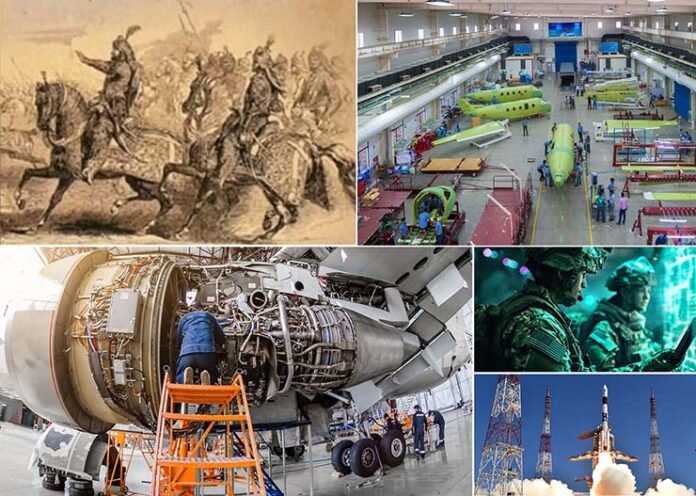Today, as global power dynamics are undergoing a seismic shift, India can emerge as a key player on the world stage with an inclusive power. With a civilisation spanning over five millennia, a population exceeding 1.4 billion, and an economy that’s the fifth-largest in the world, the imperative is to adopt a multifaceted strategy to not just rise as a global power but to do so inclusively, ensuring that our ascent is a ray of hope and cooperation for the world.
In the 21st century, emerging economies are playing a pivotal role in shaping the future of international relations. Among these, India stands out as a nation with the potential to become an inclusive global power with a commitment to multilateralism.
The Demographic Dividend & Bedrock Diversity
Our nation’s most significant asset is its youthful population. With over 65 per cent of its citizens under the age of 35, India is poised to benefit from a demographic dividend that could propel its economic growth and innovation. This young workforce is not only ambitious but also increasingly skilled, thanks to a burgeoning education sector and a focus on digital literacy. As these young Indians enter the global workforce, they bring with them fresh perspectives and a diverse skill set, positioning India as a hub for talent and innovation.
India’s inclusive narrative begins at home, with its unparalleled diversity. A nation of several languages, religions, cultures, and traditions, India’s strength lies in its ability to harmonise these differences into a unique national identity. This diversity is not just a social construct but a strategic asset that equips India with a broad perspective on global issues, fostering a diplomatic corps that can empathise with a wide range of viewpoints and challenges.
India’s strategic advantages and cultural influence are important, yet the journey is complex. Internal conflicts, environmental concerns, and socio-economic gaps need serious attention to translate potential into lasting impact
Economic Growth and Development
In the last few decades, India has made significant strides in economic development, thanks to a rapidly expanding middle class and a burgeoning consumer market. The government’s focus on reforms has further opened up the economy to foreign investment and fostered an environment conducive to entrepreneurship and innovation. Recently, Apple has decided to manufacture their ProMax series in our country; Tesla is also set to foray its car manufacturing plant in India soon. Many such accolades are India’s way making it an interesting economic bet globally.
At the heart of India’s global power playbook is economic growth coupled with social inclusion. The government’s focus is on creating an equitable society. This dual focus on economic growth and social welfare is crucial in building a nation that can confidently engage on the world stage without leaving its vulnerable populations behind.
Strategic Geopolitical Position and Inclusive Diplomacy
Our country’s strategic location at the heart of the Indian Ocean provides it with a unique advantage in global trade and security. As a maritime nation, India has been actively engaging with countries across the Indo-Pacific region, promoting free and open navigation, and ensuring the security of sea lanes that are critical for global commerce. India’s Act East Policy and its participation in various multilateral forums, including the Quadrilateral Security Dialogue (QUAD), underscore its commitment to regional cooperation and stability.
India’s geopolitical strategy is a masterpiece in inclusive diplomacy. From its neighbourhood first policy to its active participation in multilateral forums like the UN, G20, and BRICS, India has positioned itself as a bridge between the developed and developing worlds
India’s geopolitical strategy is a masterpiece in inclusive diplomacy. From its neighbourhood first policy to its active participation in multilateral forums like the UN, G20, and BRICS, India has positioned itself as a bridge between the developed and developing worlds. Its emphasis on South-South cooperation and leadership in initiatives like the International Solar Alliance speak of its commitment to global issues such as climate change, poverty, inequality and sustainable development.
By extending a helping hand to developing countries, offering technical assistance, capacity building, and humanitarian aid, India’s diplomatic efforts are not just about asserting its own interests but about creating a more equitable global order.
Cultural Soft Power
India’s soft power is another dimension of its global influence. From Bollywood to yoga, Indian culture has a universal appeal that transcends borders. India’s rich history, diverse traditions, and pluralistic society make it a melting pot of civilisations. This cultural diversity is a source of strength and a bridge to connect with people around the world, fostering cultural exchange, mutual understanding and respect.
Challenges Ahead
Despite its potential and progress, India faces several challenges that could impact its trajectory as an inclusive global power. These include socio-economic disparities, regional insurgencies, environmental degradation, and the need for continued political and economic reforms. Addressing these challenges will be crucial for India to realise its full potential and contribute meaningfully to global peace and prosperity.
–The writer is a thinker, keen observer of domestic and global economic, geopolitical development trends and a change manager with more than two decades of corporate experience. The views expressed are of the writer and do not necessarily reflect the views
of Raksha Anirveda






